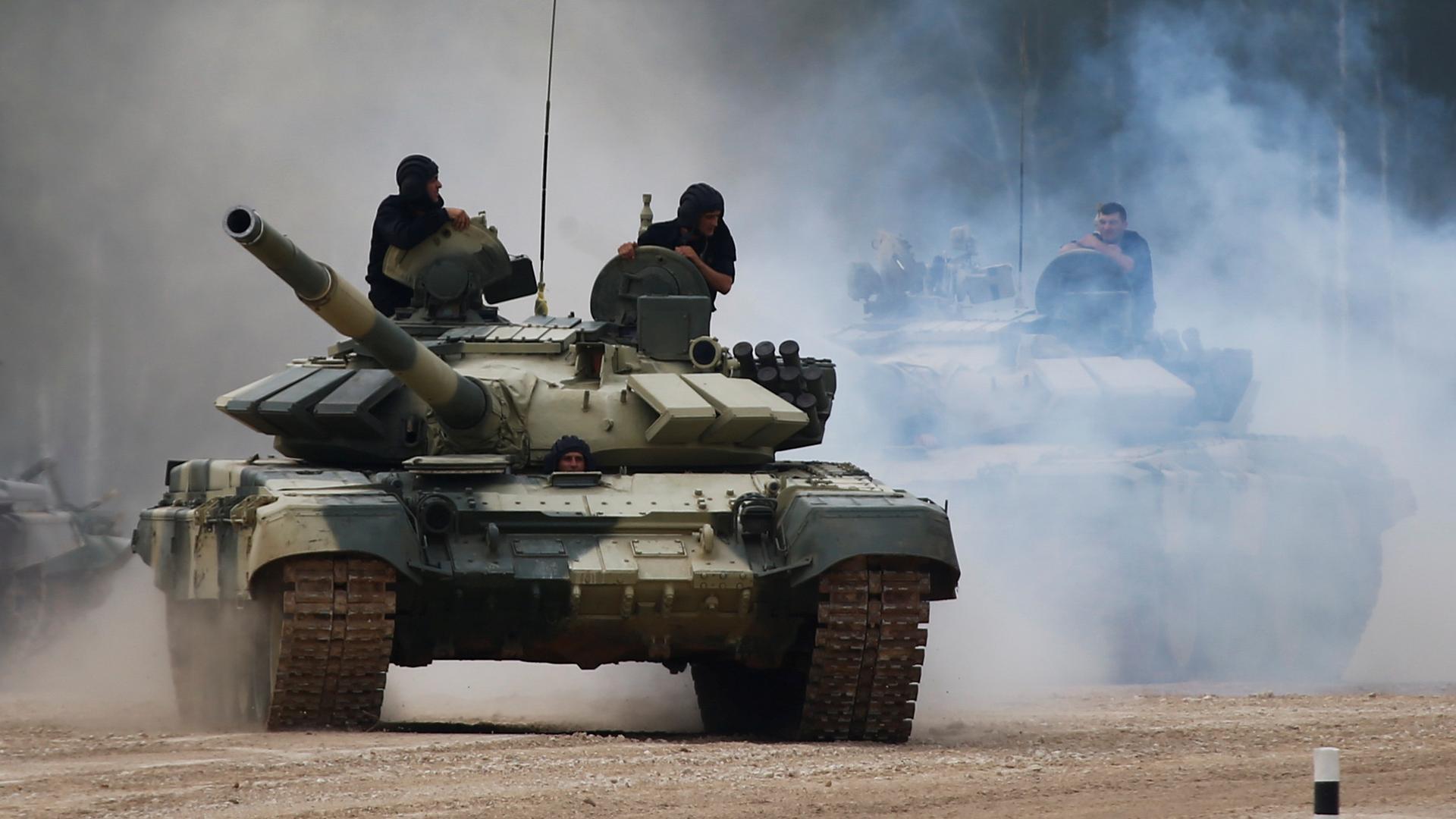
Azerbaijan has repulsed attacks by Armenia from various directions on the front.
In a statement, the Azerbaijani Ministry of Defence said the clashes took place mostly in Aghdara, Khojavand and Gubadli areas.
It added that Azerbaijani troops had neutralised many Armenian forces, as well as two SU-25 ground attack aircraft, three T-72 tanks, an armoured infantry vehicle, two Smerch and one Grad Multiple Launch Rocket Systems, 10 different types of artillery, a Gvozdika self-propelled howitzer, an OSA anti-aircraft missile system, and a P-18 radar system.
“The front is under Azerbaijaini army’s control,” it added.
READ MORE: Azerbaijan continues to liberate its territories from Armenia in Karabakh
Azerbaijan closing in on key town
The leader of Armenian separatists in Nagorno-Karabakh said on Thursday Azerbaijani forces were closing in on the town of Shusha, whose capture would mark a turning point after a month of fighting.
In a video recorded outside the town’s famed cathedral, separatist president Arayik Harutyunyan warned that advancing Azerbaijani forces were “five kilometres at the most” from the town.
“The enemy’s main goal is to capture Shushi … whoever controls Shushi controls Artsakh,” he said, using the Armenian names for the town and Nagorno-Karabakh.
He called on Armenians to come to the defence of the strategically important town, the second-largest in Karabakh after the main city Stepanakert.
Gaining control of Shusha would be a major victory for Azerbaijani forces, who have been making gains against Armenian separatist fighters since new fighting erupted over Nagorno-Karabakh a month ago.
The town is located on strategic heights over Stepanakert and on the road linking the city with Armenian territory.
The two sides have three times agreed to ceasefires – the latest in a US-brokered deal at the weekend – but the truces have all quickly fallen apart.
The fighting has intensified in recent days, including with renewed shelling and rocket attacks on civilian areas.
READ MORE: Nagorno-Karabakh: A frozen conflict erupts
Heavy missile strikes
Karabakh’s rights ombudsman Artak Beglaryan told AFP earlier on Thursday that Azerbaijan had launched some of its heaviest strikes yet.
“Azerbaijan struck Stepanakert for several hours, tens of missiles hit the city,” he said.
The strikes came after Azerbaijan accused Armenian forces of killing 21 people and wounding dozens in a missile strike on the town of Barda on Wednesday.
More than 1,200 people from both sides have been reported dead since the fighting began, including over 130 civilians, and thousands forced from their homes.
READ MORE: Armenia targets Azerbaijan’s civilians in fresh fighting
Azerbaijan has not released any figures on its military casualties but Russian President Vladimir Putin said last week that close to 5,000 people had been killed.
Diplomatic efforts have continued, though planned talks involving the two countries’ foreign ministers in Geneva on Thursday were postponed for at least a day.
The talks were to be mediated by the Minsk Group of Russia, France and the United States, which have tried since the 1990s to bring about a negotiated settlement to the conflict.
Azerbaijan has been making significant gains since the fighting began by retaking areas it lost in the 1990s war, in particular in a buffer zone outside Karabakh seized by the Armenians.
READ MORE: Azerbaijan: Military ops to retake Armenian-occupied areas ongoing
Armenia has admitted to suffering losses and called on volunteers to join the fighting.
Azerbaijan said on Thursday it had handed to Armenia the bodies of 30 troops killed in the fighting.
“Armenia has failed to show goodwill in that matter, but thanks to Russian mediation, has ‘agreed to open a humanitarian corridor’ for the evacuation of Azerbaijani soldiers’ bodies from battlefields,” President Ilham Aliyev’s foreign policy adviser, Hikmet Hajiyev, told journalists.
Armenian Defence Ministry Spokeswoman Shushan Stepanyan confirmed the handover mediated by Russia and the Red Cross and added that the Armenian side was ready to return bodies of slain Azerbaijani soldiers.
READ MORE: Azerbaijan: Int’l community should impose sanctions on Armenia
Upper Karabakh conflict
In total, about 20 percent of Azerbaijan’s territory – including Nagorno-Karabakh and seven adjacent regions – has remained under illegal Armenian occupation for nearly three decades.
Four UN Security Council resolutions and two from the UN General Assembly, as well as international organisations demand the “immediate complete and unconditional withdrawal of the occupying forces” from the occupied areas of Azerbaijan.
The Parliamentary Assembly of the Council of Europe also refers to the territory as being under the occupation of the Armenian forces.
“Considerable parts of the territory of Azerbaijan are still occupied by Armenian forces, and separatist forces are still in control of the Nagorno-Karabakh region,” according to the PACE Resolution 1416, which was adopted on January 25, 2005.
The Organization for Security and Cooperation in Europe Minsk Group – co-chaired by France, Russia, and the US – was formed in 1992 to find a peaceful solution to the conflict, but to no avail.
World powers, including Russia, France, and the US have called to halt tensions in the region. Turkey, meanwhile, has supported Baku’s right to self-defence and demanded the withdrawal of Armenia’s occupying forces.
READ MORE: Violations reported as new ceasefire comes into force in Nagorno-Karabakh
Azerbaijan and Armenia have been locked in a bitter conflict over Karabakh since Armenian separatists backed by Yerevan seized control of the mountainous province in a 1990s war that left 30,000 people dead.
Karabakh’s self-declared independence has not been recognised internationally, even by Armenia, and it remains a part of Azerbaijan under international law.
The heaviest fighting since a 1994 ceasefire erupted on September 27 and has persisted despite intense diplomatic efforts to bring it to a halt.










Discussion about this post